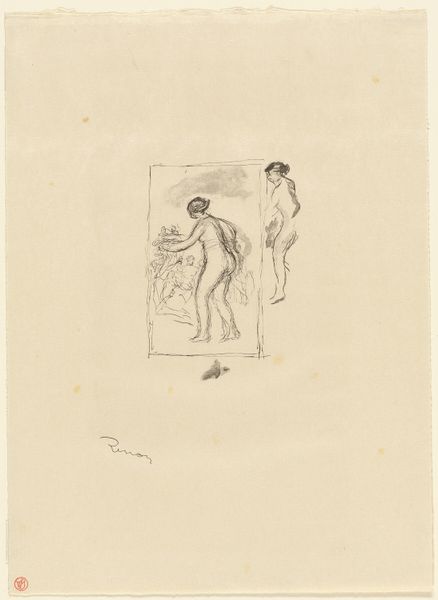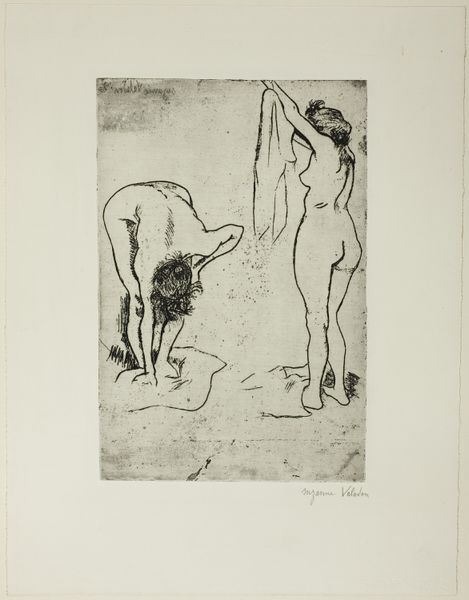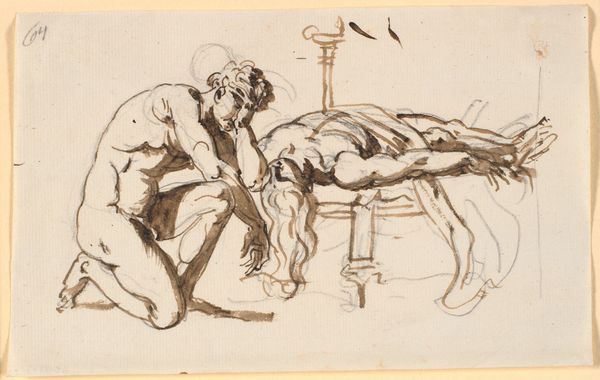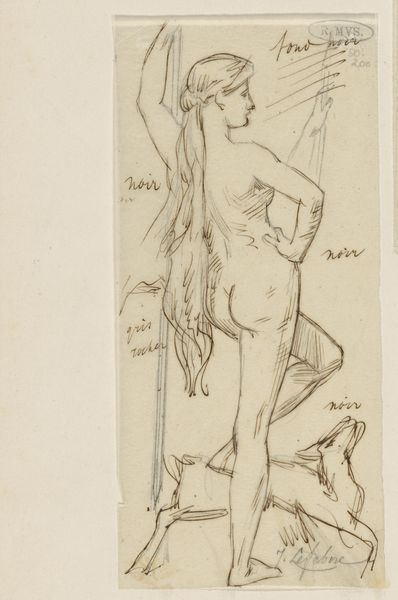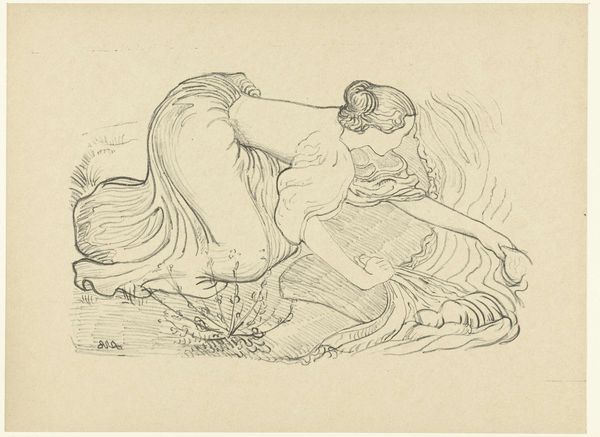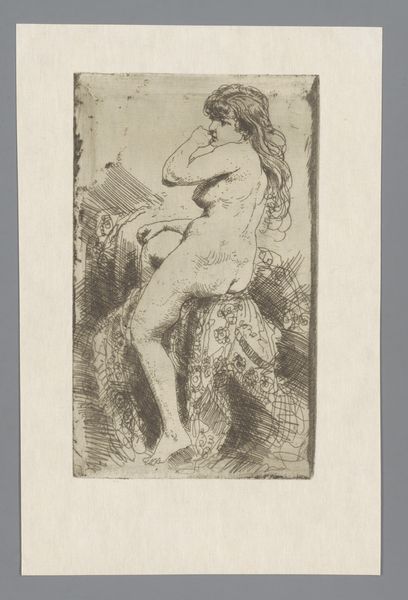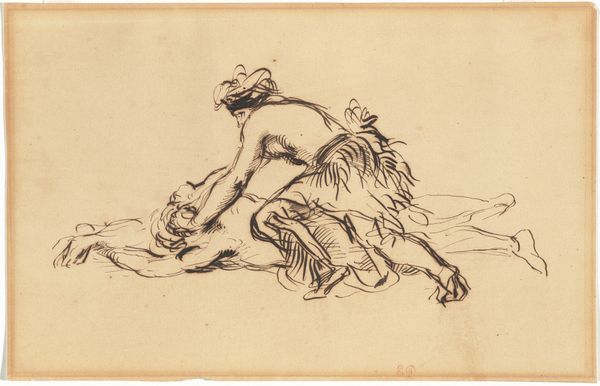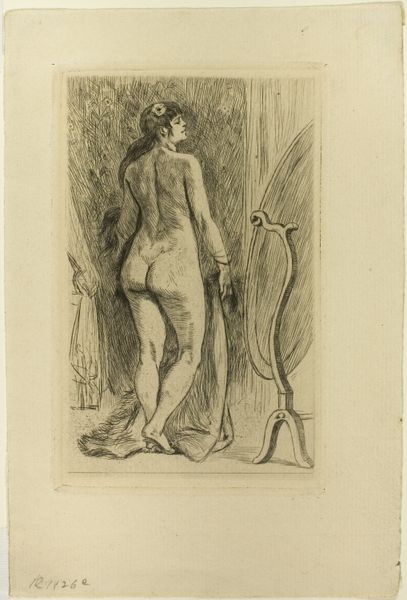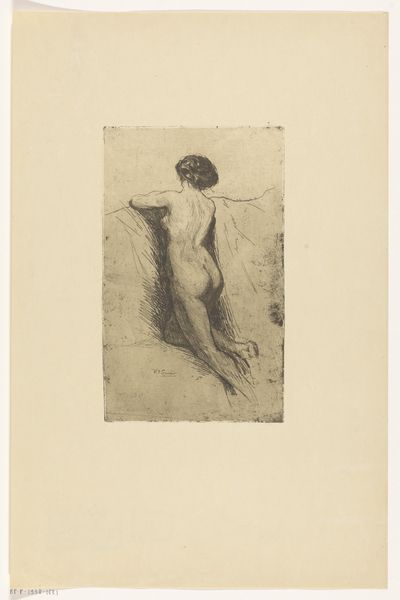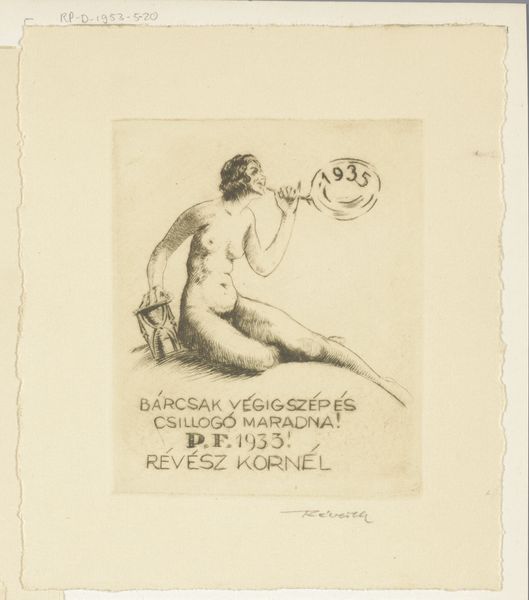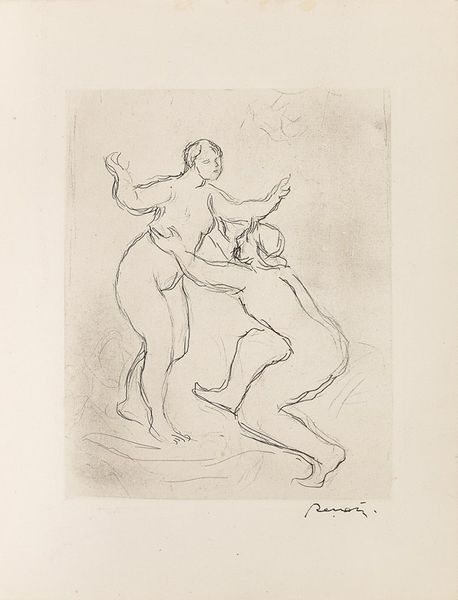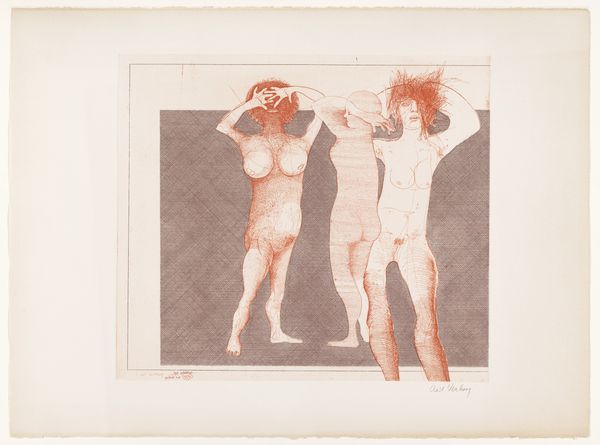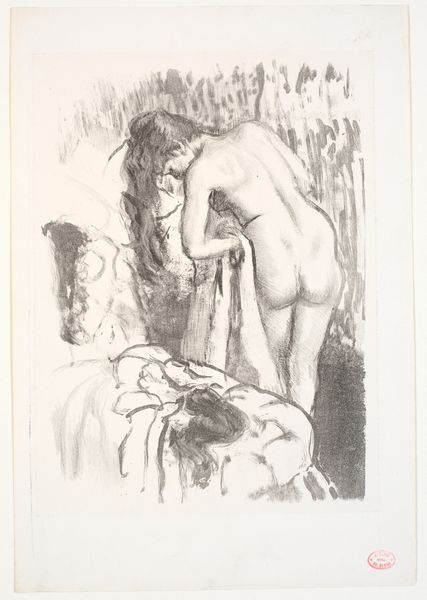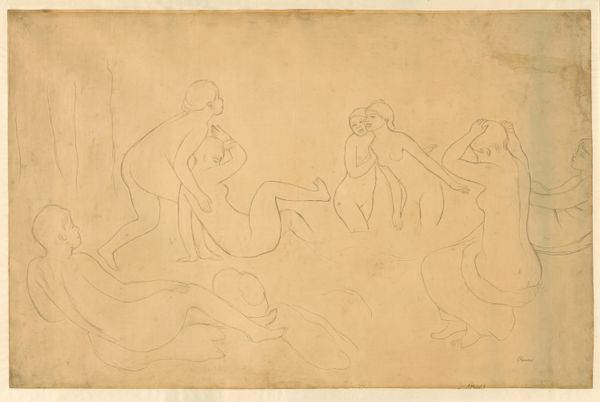
Dimensions: 290 × 319 (image/plate); 424 × 537 mm (sheet, folded); 434 × 570 mm (unfolded)
Copyright: Public Domain
Art Historian: Welcome. We are standing before Suzanne Valadon’s "Two Women Drying Themselves," an etching and ink drawing from 1896. The artwork, currently held at the Art Institute of Chicago, depicts two female figures in a candid, intimate setting. What catches your eye? Artist: There’s something wonderfully unposed about it, isn't there? The woman bending over seems so completely absorbed, and the other…it feels like I’m glimpsing a stolen moment, a private ritual. The simplicity of the lines really draws me in. It feels both vulnerable and powerful, capturing the raw essence of these women. Art Historian: Absolutely. Consider the symbol of water and cleansing, so deeply embedded in mythology and ritual. Drying becomes an act of reclaiming oneself, emerging anew. Valadon often portrayed women in domestic spaces, subverting the traditional male gaze by showing them as active subjects rather than passive objects. Artist: I agree about reclaiming themselves! There is such casual strength in their bodies. These women seem completely unselfconscious, in touch with their physicality. It also makes me think of the complexities around women looking at other women – is this about solidarity, desire, something else? I keep wondering what Valadon herself felt. Art Historian: It is crucial to acknowledge Valadon's background; a model turned artist, she reclaimed her own narrative. This work rejects idealized forms, embracing a more authentic, human portrayal. Notice also the use of line and negative space – echoing classical friezes while still possessing modern sensibilities. This echoes the symbol of transition and permanence together, like cultural memory itself. Artist: Yes, there’s this delicate tension between timelessness and immediacy! And the limited use of detail… It makes my eye fill in the gaps, engaging me in their world. What remains unsaid somehow deepens the emotional impact. You said 'transition', which makes sense—a physical transition, but maybe also hinting at changing social expectations of women at the time. Art Historian: Precisely. This piece encourages contemplation beyond mere observation. The act of drying off becomes almost sacramental. Through careful study of such imagery we can find keys unlocking past assumptions and creating future conversations. Artist: Thank you, this was really interesting. Now, when I return to the drawing, the drying women will evoke not only my own senses, but also layers of cultural identity and subtle power—I appreciate that added resonance!
Comments
No comments
Be the first to comment and join the conversation on the ultimate creative platform.
